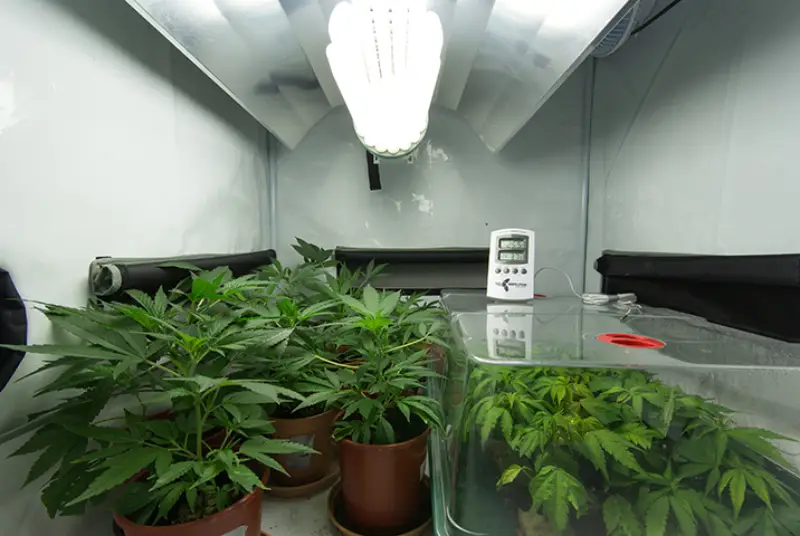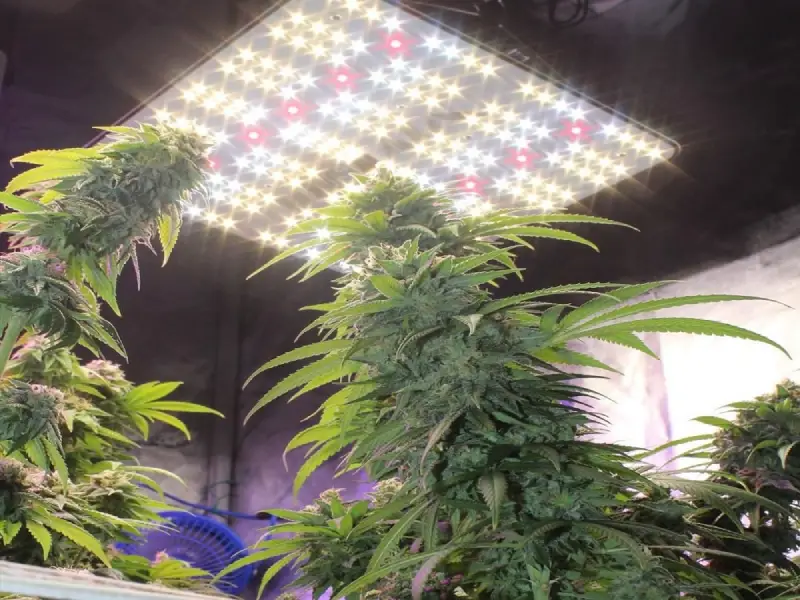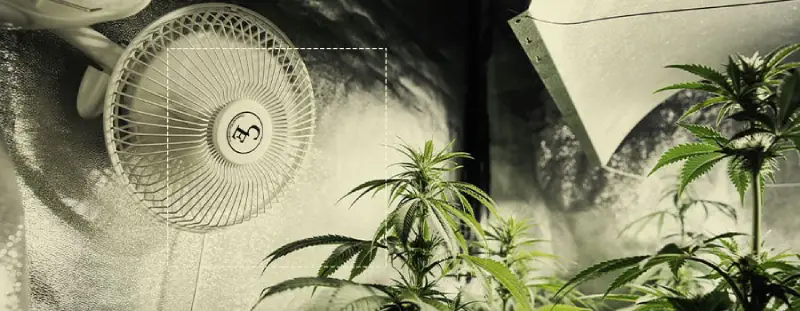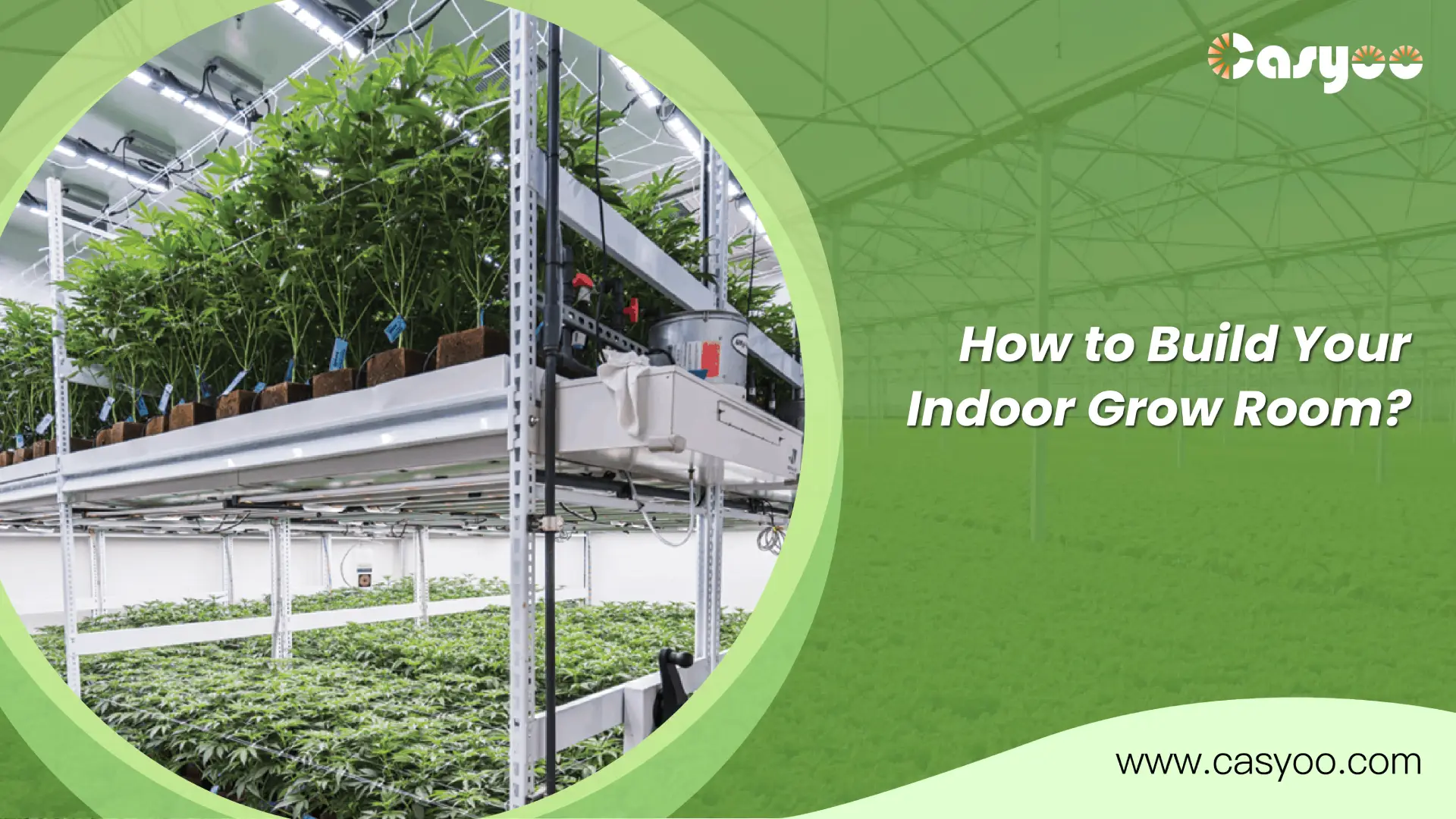If you are ready to grow your cannabis indoors, you might be considering buying a grow tent or setting up a grow room. If you have decided to build a grow room, you have come to the right place, keep reading to get a better understanding of how to build your indoor grow room for your cannabis plants.
Find the Right Space

First, find the right space for your cannabis growing.
Before setting up your space, you should consider the following items:
Space
Almost any space can be used for a grow room setup. Indoor growers prefer to use enclosed spaces, such as closets or small rooms with doors. If you don’t have much choice, you can buy a grow tent so that you can get space without taking up an entire room.
Grow tents are ideal for growing plants since they are often composed of sturdy materials that can tolerate high temperatures and humidity. Space limitations can affect the height and yield of your plants. Growers with large grow spaces should consider dividing smaller areas to save resources.
Power Supply
You will need to add electrical outlets if you wish to cultivate plants in a large space. You must ascertain the size of the grow space and the quantity of plants you intend to grow in order to calculate the amount of electricity your plants will use.
Water Sources
The water sources in your area must also be taken into account. It takes a lot of water to water plants, so if yours are inside, you’ll need a sufficient supply. It is preferable to utilize pure filtered water rather than unfiltered rainfall.
Noise
Lights and fans can create some noise. If you are growing cannabis in a spare area away from the main living areas of the house, then this should not be a problem. However, if you are growing up in a bedroom, then noise will be a problem. Sounds will be amplified in an enclosed environment, and the smell of the plants will be more noticeable.
Flooring
Select a waterproof flooring material that is appropriate for the environment in which your plants are grown. Do not grow directly on carpeted floors. They will harbor bugs and breed bacteria. Add reflective panels to the floor or grow cannabis in a tent to increase humidity levels.
Climate Measurements
If you are growing your plants indoors, you will have to regulate the environment in your growing area. This means installing intake fans, thermostats, and humidifiers or dehumidifiers based on the needs of your plants.
Create a Light-Proof Environment
A completely light-proof grow room is necessary. First, grow lights are very bright, and light leaks can be annoying. Light leaks can keep you up at night if your grow room is a spare corner of an occupied room or a bedroom cupboard. In the worst case, it can tell the entire neighborhood that you are growing marijuana.
Second, light leaks can adversely affect the performance of your plants. Once the plants are on a 12-12 photoperiod to induce flowering, light leaks can confuse the plants, leading to lower yields, hermaphroditism, or even poor crop yields due to light stress.
Once you have your grow area set up, turn on the lights and check for any light leaks. Light will undoubtedly enter through any gaps or fissures that allow light to exit. If holes are found, use light-proof tape to seal them.
Most electrical devices in your grow room, such as humidifier machines, have fairly bright LED lights that can cause damage to your plants similar to ambient light leaks. To make sure that the nights are the darkest, cover the lights of such gadgets with a piece of tape.
Choose a grow light

This is the most important step. For an indoor grow room, you need a grow light that simulates sunlight to provide the required spectrum for your plants. Therefore, you will get the best results if you choose the most appropriate light for your crop.
What is a grow light?
A typical grow light consists of the following parts:
- Ballast: This is used to regulate and control the energy supply required to power the light
- Lamp: This is used to actually produce the light
- Reflector: This is used to direct as much light produced as possible onto your plants
You definitely require a grow light. There are several types of grow lights available on the market.
Fluorescent Lights
Beginners with smaller grow rooms and fewer plants can use fluorescent lights. For indoor growers, it’s an inexpensive choice. The best thing about these lights is that they are safer and may be used close to the plants because they emit less heat than incandescent lights. They also save energy, on the other hand, incandescent lights consume a lot of electricity and are not cost-effective. Furthermore, compared to incandescent lights, fluorescent lights have an 8–16 times longer lifespan.
There are two main types of fluorescent lights: CFL and fluorescent tubes.
These lights are suitable for affordable indoor grow rooms, but they also have some problems:
- Fluorescent lights don’t produce light that is powerful enough or appropriate for the blossoming stage.
- They are better for germinating seeds, but if you need to get better yields, you need to look at other options.
High-Intensity Discharge Lamps
HID lamps are very powerful and they emit considerable light intensity. These lamps are perfect for growing indoor plants, but they are expensive. In order to avoid burning the plants, you should also hang the light source at an appropriate height and take all necessary precautions to keep both you and the nearby workers safe.
Ceramic Metal Halide (CMH), Metal Halide (MH), and High Pressure Sodium (HPS) are the three varieties of HID bulbs available. The best option for you can be determined by your needs. Remember that small indoor grow rooms and novices are not the best candidates for these lamps.
LED Grow Lights
LED grow lights are the best lights for indoor planting, especially the Casyoo grow lights. Whether your indoor growing room is small or large, LEDs are the perfect choice.
The energy efficiency of LED grow lights is its primary benefit. Little heat is created when 80–90% of the electrical energy is transformed into light. Consequently, compared to other light technologies, these lights are more efficient. Their energy savings are evident in your electricity bill. Furthermore, because they don’t produce a lot of heat, these lights don’t hurt crops in any way. Crops can grow well and provide excellent yields. The temperature in the grow room is kept low and controlled, so you need less water to water the plants.
Ventilation
Air exchange is essential for plant health. A constant free flow of fresh air promotes healthy plant growth. A good ventilation system also helps prevent mold and pests.
Inadequate installation of a ventilation system can result in numerous issues, including:
- Low CO2 levels: These have a direct impact on growth and photosynthesis.
- Elevated temperatures: Excessive heat can cause stress to plants, hinder photosynthesis, and raise the danger of pests and illnesses.
- High humidity: Too much humidity can promote mold growth, pest invasions, and disease.
- Stale air: Oxygen, which is necessary for plants to breathe and use glucose as fuel, may be absent from stagnant air.
- Odors: Stale air can make odors worse.
Intake and exhaust fans make up a ventilation system; the size of your grow room will determine whether ventilation ducts are also required.
Grow tents are pre-assembled with vents. Make sure you cut the holes in a cabinet the proper size for your ventilation if you’re utilizing one.
Carbon filters are also a wonderful idea because they purify the air and eliminate scents, which makes them a necessary addition if you cultivate aromatic crops. They connect to the extraction system so they can clean the air before it is pulled out of the grow room.
Air Movement

Even though you have a ventilation system, you still need circulation fans to keep the air moving around the growing space. Fresh air is always necessary for cannabis plants to thrive. To guarantee that the air is continuously moving, any grow room must include at least one oscillating fan. Moving air has many benefits for cannabis plants.
Moving air wrinkles all the leaves on the plant to ensure that the leaf stomata have fresh air. In a static environment, stale air will accumulate at the base of the leaves around the stomata and prevent efficient gas exchange. This inhibits plant growth, resulting in thin stems, drooping leaves, and reduced plant yields.
Moving air also helps the wet-dry cycle of the growing medium by speeding up evaporation. In addition, it prevents pathogens caused by moisture accumulation when the leaves transpire. Mold only likes moist, warm environments.
Grow Room Safety Tips
Electrical Safety
In an indoor grow room, electrical safety is essential. Make sure the electrical outlets and wiring are in good condition first. The wiring needs to be completed based on the load that you intend to use. You can’t choose any old wiring. You need to consult a professional electrician who will calculate the load and recommend the right wire gauge, number of strands, and so on.
Also, the outlet should be able to handle the current. If the wire or outlet carries too much current, it will generate too much heat, which can damage the wire insulation. This can cause a short circuit, fire, or damage to the load.
Fire Safety
Short circuits and other electrical issues can cause fires. You need to have proper electrical safety measures in place to prevent it.
Nothing should be placed near hot bulbs or lamps. Keep your lamps away from flammable materials. A grow room fire has the potential to ruin your belongings, endanger your life, and draw attention from the police to your herbal pastime. A fire extinguisher should always be kept close by in case your equipment catches fire. Alternatively, purchase a fire extinguisher ball and place it above your grow space. When these devices come into contact with too much heat, they burst and emit powdered flame retardant. Install smoke detectors in your grow room to help identify fires early on. You’ll be able to extinguish the fire quickly with this technique.
Personal Safety
Always wear protective eyewear when working in an indoor grow room. Some of the light from grow lights is harmful to your eyes. Also, do not work too much under grow lights because the UV rays can cause damage to your skin.
Keep the floor dry as it creates a slip and fall hazard.
Always wear gloves when working with fertilizers and chemicals. Also, keep them in a safe place.
If there are any chemicals used for pest management, wear a respirator mask.
Your footwear shouldn’t be slick.
Use caution when handling gardening tools.
The door of an indoor grow room should be fireproof.
Organize your growing space as much as you can. Set up a specific area for every piece of gear, and use plastic cable ties to keep wires organized. Make quick repairs to any exposed or broken wires you uncover. Clean up all tools after use to prevent any tripping hazards. Keep pruning shears, watering cans, and spray bottles in your toolbox when not in use. Not only can tripping lead to injuries, but you may also fall on your plants and cause serious damage.
Final thoughts
Building your own indoor grow room requires some necessary tools, and sufficient knowledge of growing and safety issues is also important. You can buy high-quality LED grow lights from Casyoo. Start your growing journey now!




